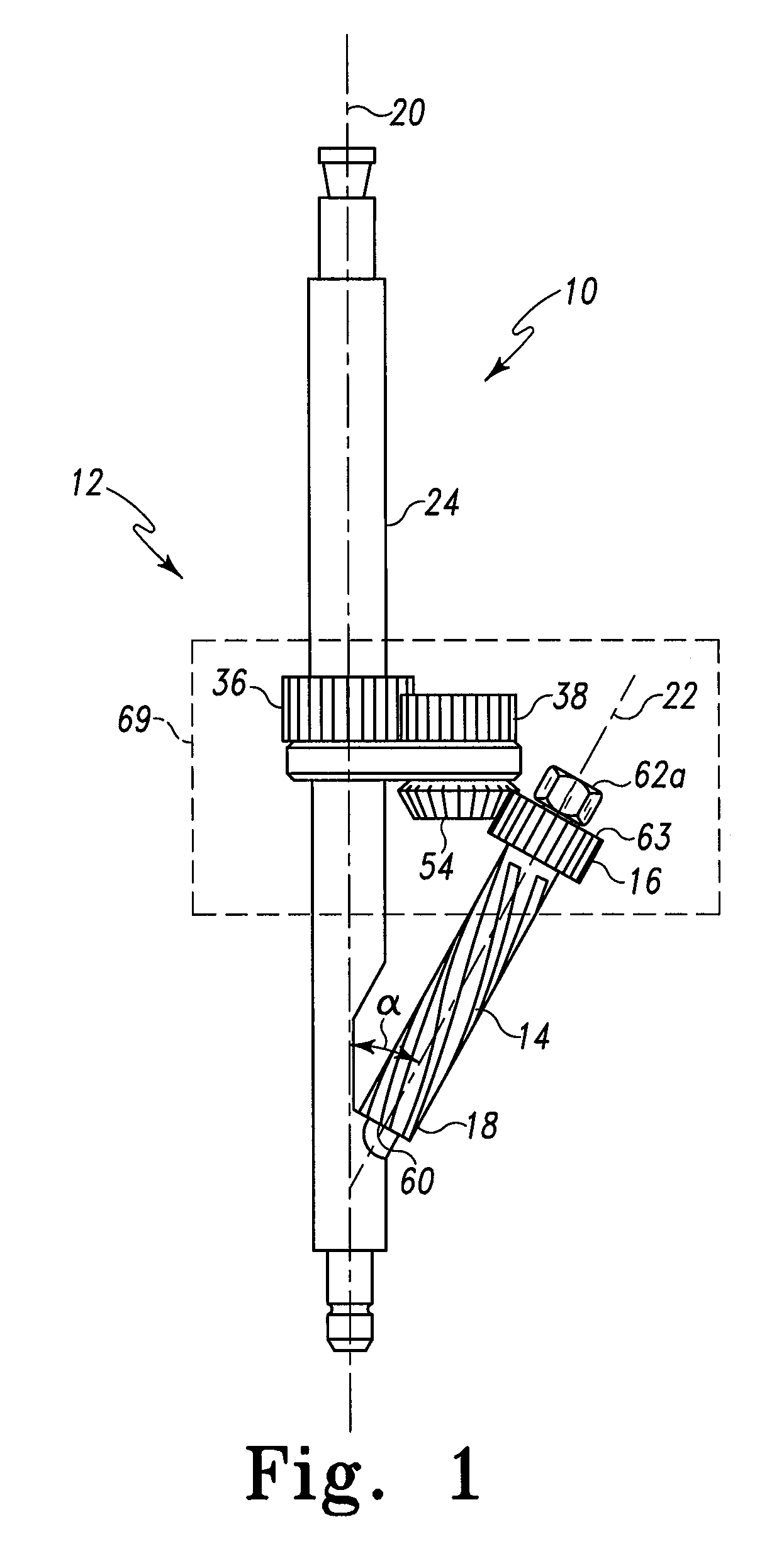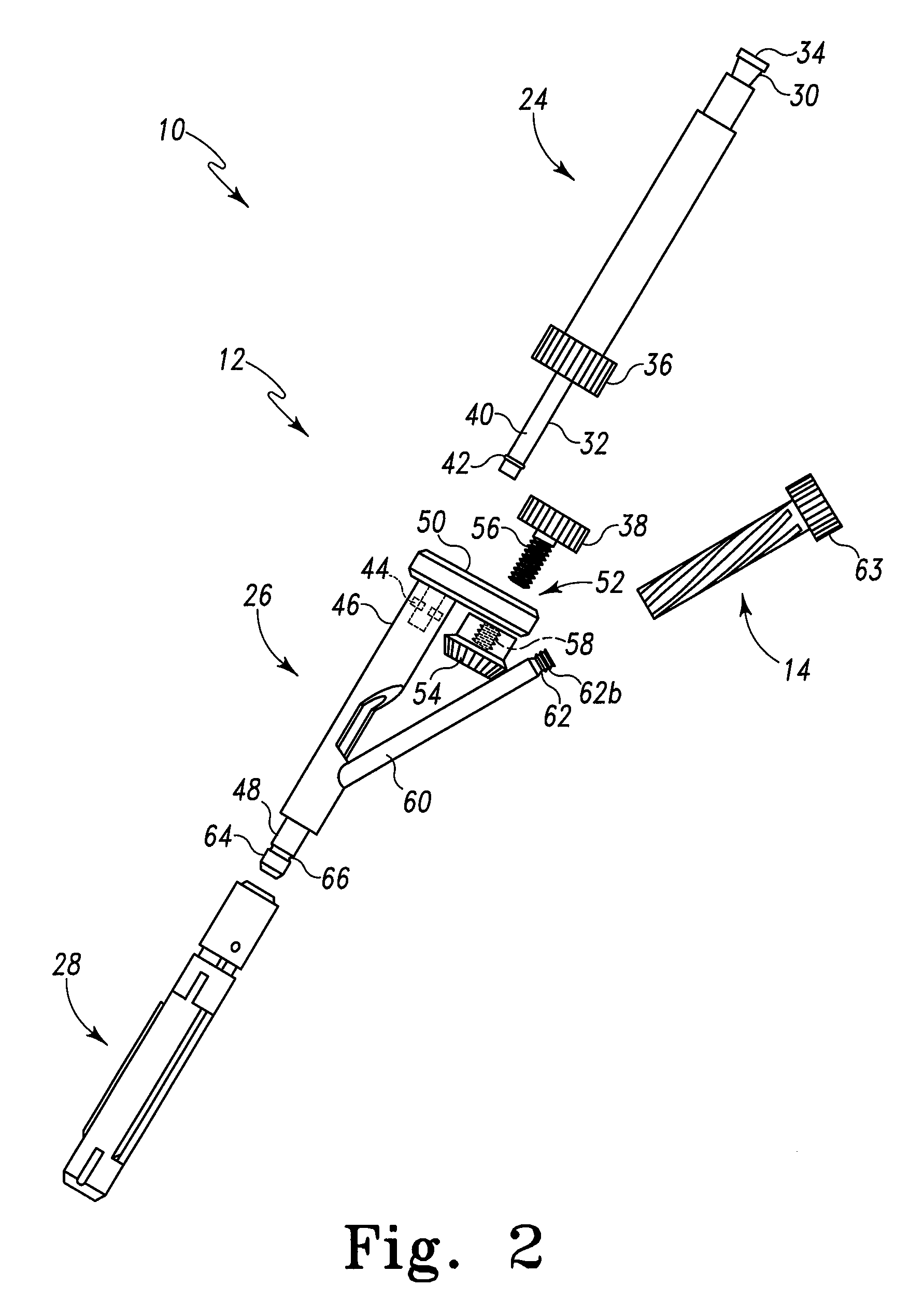Minimally invasive bone miller apparatus
a miller and minimally invasive technology, applied in the field of artificial joint prostheses, can solve the problems of affecting the quality of bone preparation,
- Summary
- Abstract
- Description
- Claims
- Application Information
AI Technical Summary
Benefits of technology
Problems solved by technology
Method used
Image
Examples
Embodiment Construction
[0021]Embodiments of the present invention and the advantages thereof are best understood by referring to the following descriptions and drawings, wherein like numerals are used for like and corresponding parts of the drawings.
[0022]The disclosed calcar miller assembly 10 allows a surgeon to machine (mill) bone through a smaller incision compared to existing surgical instruments. As shown in FIG. 1, the miller assembly 10 includes a frame 12 and a miller cutter 14 that is coupled to the frame 12 at both a proximal end 16 and a distal end 18. The frame 12 includes a longitudinal axis 20. The miller cutter 14 also has a longitudinal axis 22 that is offset at an angle α from the longitudinal axis 20 of the frame 12. The angle α is greater than 0 degrees. In some embodiments, the angle α is between about 30 and about 60 degrees. In some embodiments, the angle α is between about 40 degrees and about 50 degrees.
[0023]Turning now to FIG. 2, an exploded view of the calcar miller assembly 10...
PUM
 Login to View More
Login to View More Abstract
Description
Claims
Application Information
 Login to View More
Login to View More - R&D
- Intellectual Property
- Life Sciences
- Materials
- Tech Scout
- Unparalleled Data Quality
- Higher Quality Content
- 60% Fewer Hallucinations
Browse by: Latest US Patents, China's latest patents, Technical Efficacy Thesaurus, Application Domain, Technology Topic, Popular Technical Reports.
© 2025 PatSnap. All rights reserved.Legal|Privacy policy|Modern Slavery Act Transparency Statement|Sitemap|About US| Contact US: help@patsnap.com



